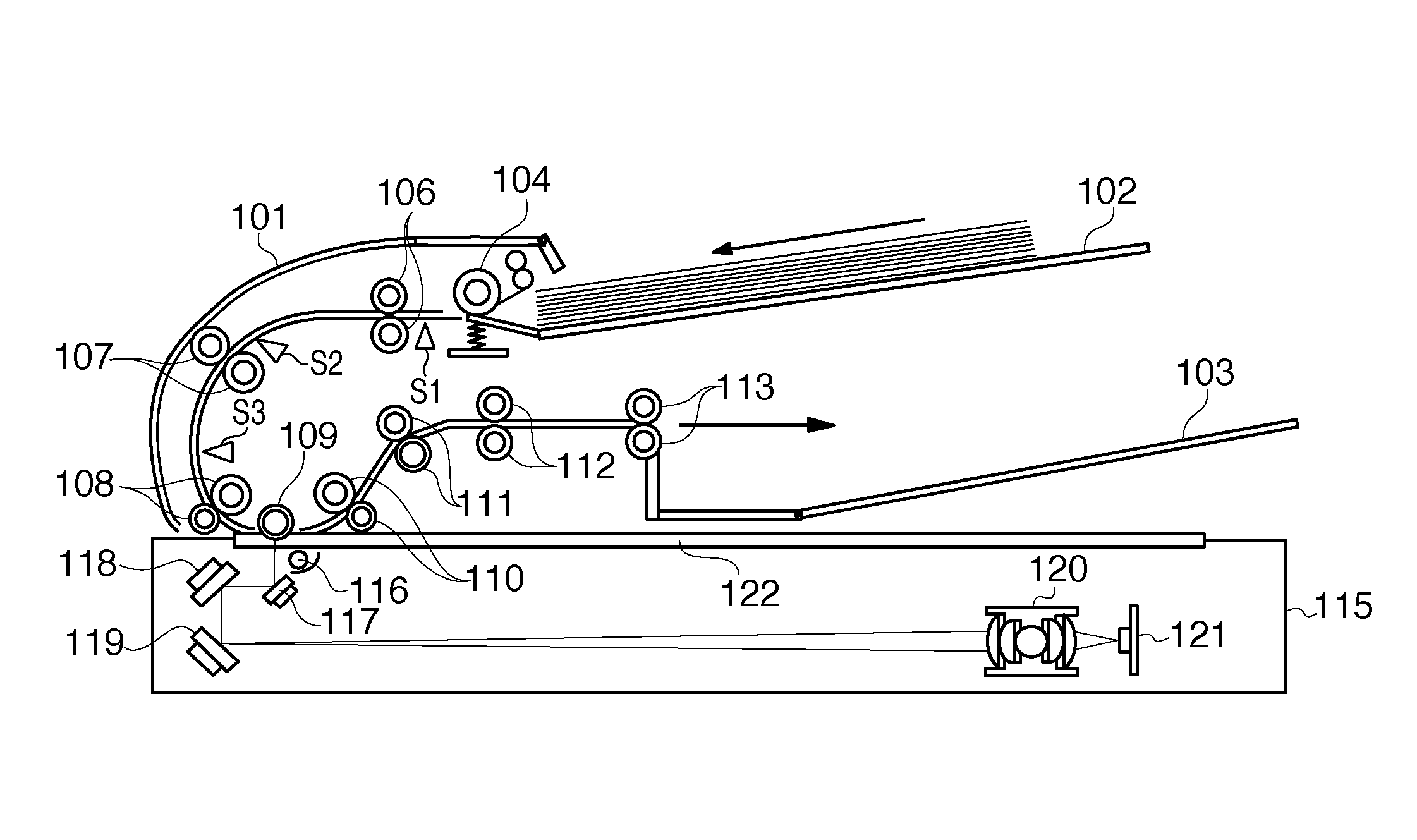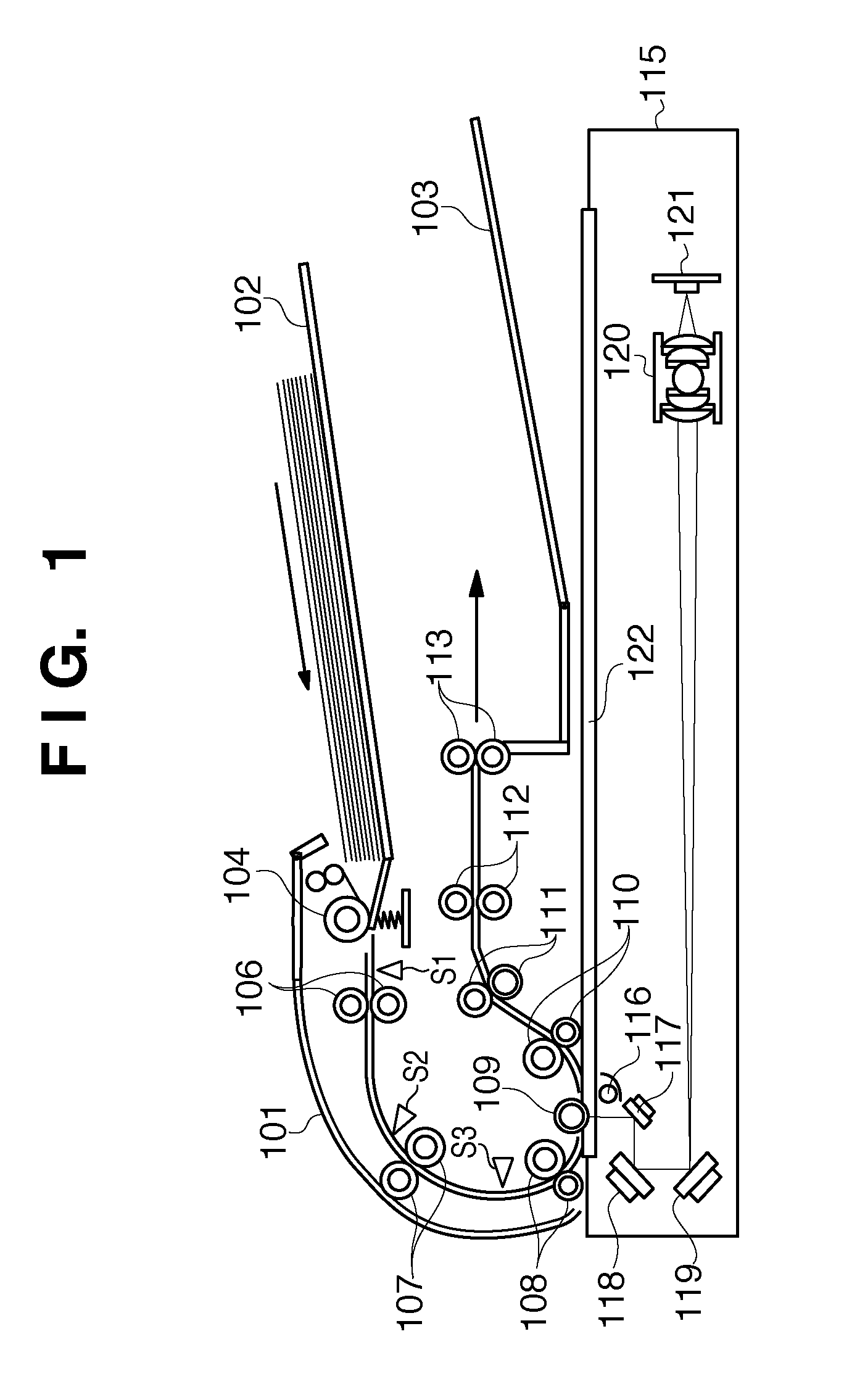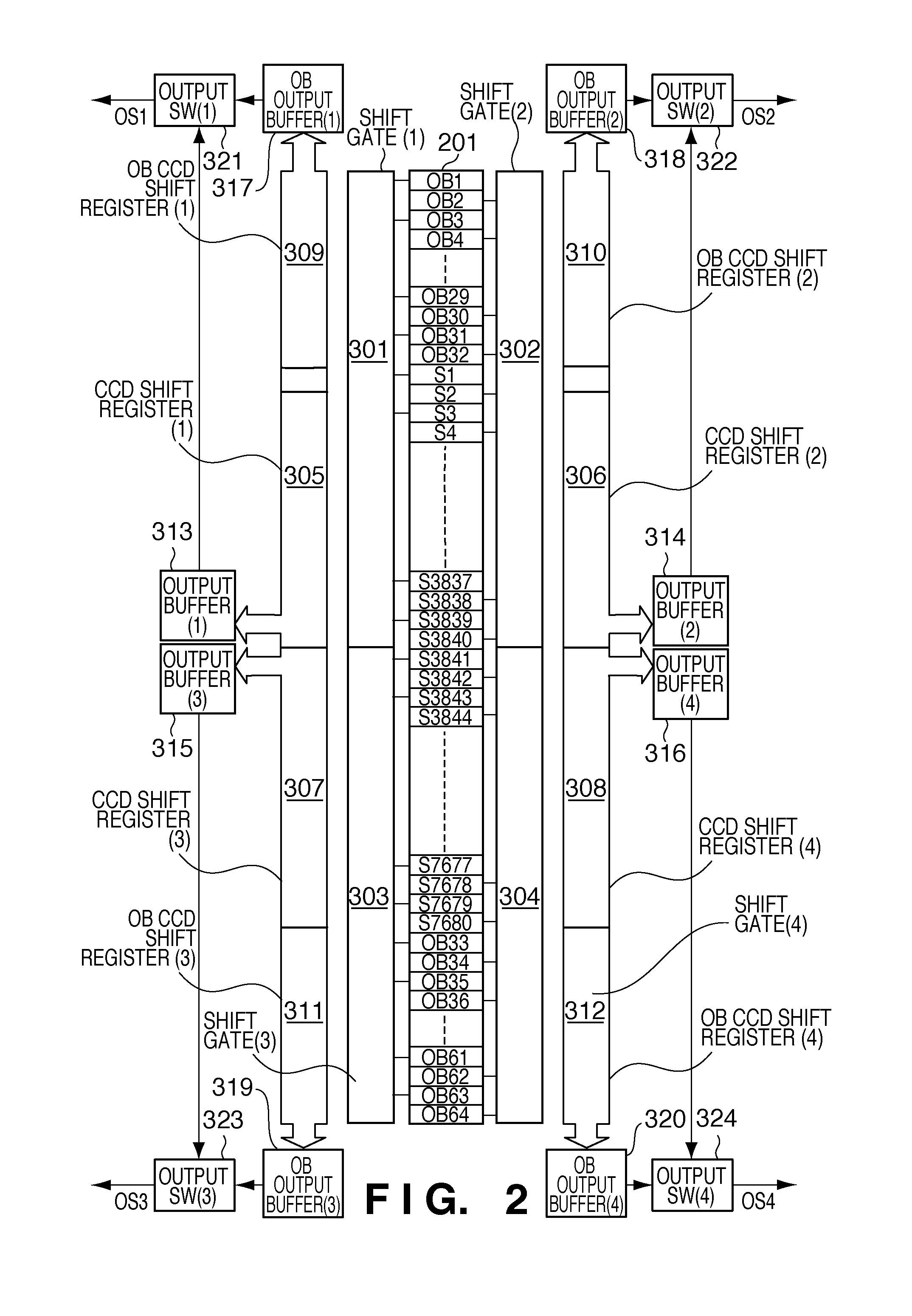Image reading apparatus
a technology of image reading and reading apparatus, which is applied in the direction of electrical apparatus, television system details, television systems, etc., can solve the problem of inability to perform image transfer to the next image processing unit, and achieve the effect of shortening the throughput time of images
- Summary
- Abstract
- Description
- Claims
- Application Information
AI Technical Summary
Benefits of technology
Problems solved by technology
Method used
Image
Examples
first embodiment
[0043]An example of the arrangement of the first embodiment and an example of the operation of the embodiment in a case in which the image reading apparatus of the present invention is implemented by a CCD sensor will be described below.
[0044]
[0045]FIG. 2 shows an example of the arrangement of a CCD sensor according to this embodiment, i.e., the photoelectric conversion element 121 in FIG. 1. Reference numeral 201 denotes a photoelectric conversion element in which a plurality of CCD sensors which are pixel sensors are arranged. That is, this is a photo-detector (to be referred to as PD hereinafter) unit including PDs. PDs on which light-shielding films are formed to block light are arranged on the two end portions of the PD unit 201 so as to be arranged on each of the right and left end portions in correspondence with 32 OB pixels (OB1 to OB64) configured to detect reading levels at a dark time. These pixel portions will be referred to as shading pixel portions. PDs S1 to S7680 loc...
second embodiment
[0068]The following is an example of the arrangement of the second embodiment and an example of the operation of the embodiment in a case in which the image reading apparatus of the present invention is implemented by a CMOS sensor. To avoid a redundant description, the arrangement and operation of the second embodiment which are the same as those of the first embodiment will not be described. For such information, refer to the arrangement and operation of the first embodiment.
[0069]
[0070]FIG. 14 shows the second embodiment of the present invention, which is applied to a CMOS sensor. Like the PD unit 201 in FIG. 2, a PD unit 400 of the CMOS sensor has OB pixels provided on the two end portions, with light-receiving elements for reading an image being arranged inside the OB pixels in the main scanning direction. Output buffer+shift gates 401, 402, 403, and 404 convert charges in all the elements which is generated by the CMOS PD unit 400 into voltages, and then send the voltages to C...
PUM
 Login to View More
Login to View More Abstract
Description
Claims
Application Information
 Login to View More
Login to View More - R&D
- Intellectual Property
- Life Sciences
- Materials
- Tech Scout
- Unparalleled Data Quality
- Higher Quality Content
- 60% Fewer Hallucinations
Browse by: Latest US Patents, China's latest patents, Technical Efficacy Thesaurus, Application Domain, Technology Topic, Popular Technical Reports.
© 2025 PatSnap. All rights reserved.Legal|Privacy policy|Modern Slavery Act Transparency Statement|Sitemap|About US| Contact US: help@patsnap.com



